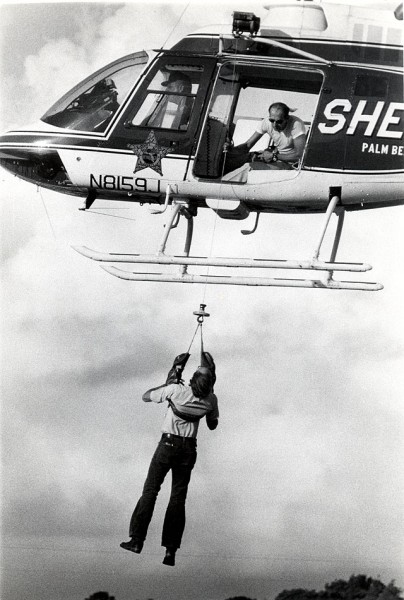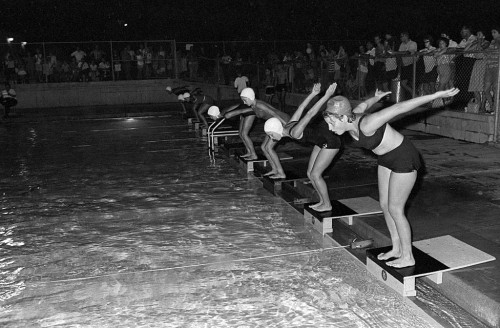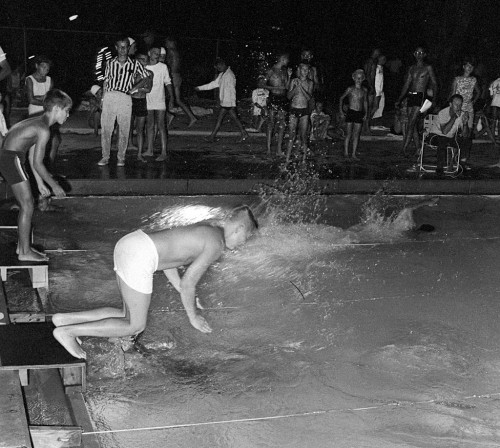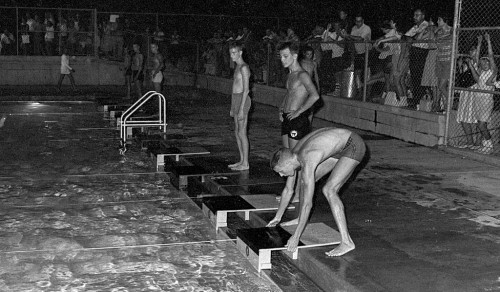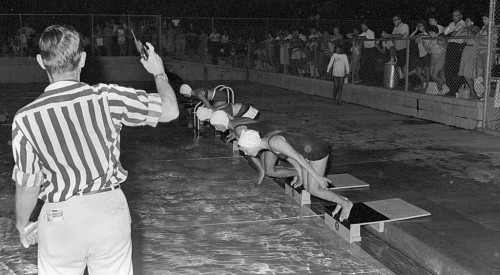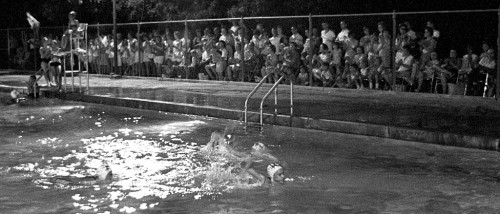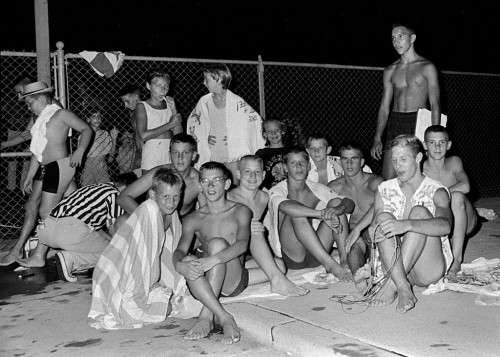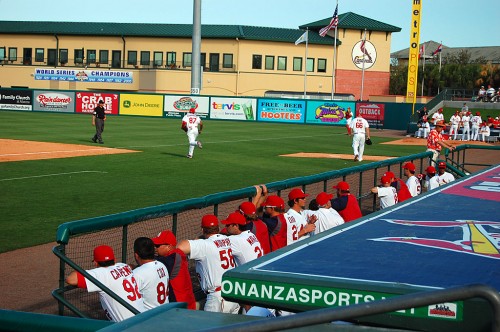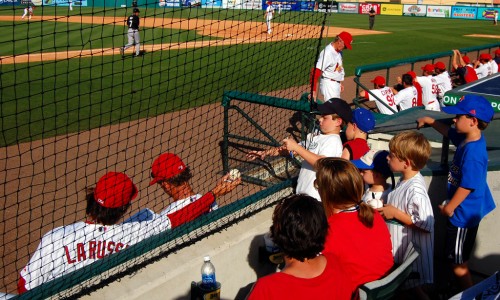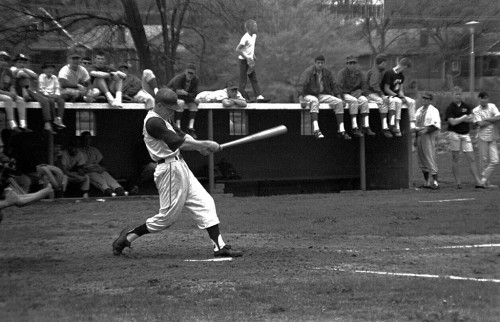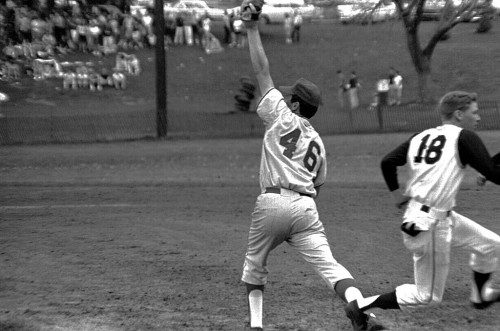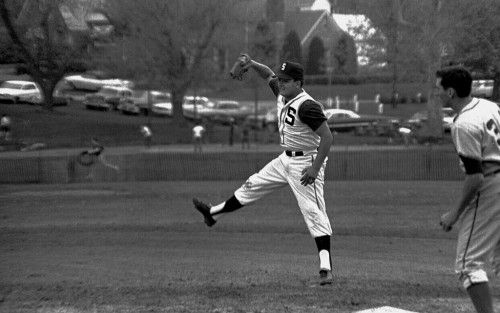I read somewhere that you can’t use the phrase Super Bowl without getting nasty letters from the folks who license it. They supposedly even tried to trademark The Big Game, so we’ll be somewhat circumspect here. We’ll call it The Big Blowout.
This picture isn’t the one I was looking for, but it’ll have to do since it has a helicopter in it. Here’s the story about why I was dangling from it.
I don’t remember what year it was, but we were unfortunate enough to have The Big Blowout played in Miami. Unfortunate because we were going to have to pull out all the stops to cover it. Miami is 1-1/2 hours away on a good day, and Big Blowout Day isn’t a good day.
This is not from The Big Blowout
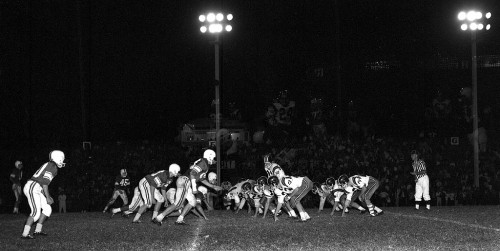 To get around the problem, I chartered a helicopter like the one above to shoot some aerials of the stadium and then land to pick up film from our photographers. We were going to keep making those film pickups throughout the game to keep from getting hit with all the film at the same time.
To get around the problem, I chartered a helicopter like the one above to shoot some aerials of the stadium and then land to pick up film from our photographers. We were going to keep making those film pickups throughout the game to keep from getting hit with all the film at the same time.
The first problem came when we couldn’t get permission from the City of West Palm Beach to have the chopper land in our parking lot to do the film drop. “We can’t land,” I said to the pilot, “but there’s nothing to keep you from hovering so long as you get the OK from Air Traffic Control, right?”
“Right,” he nodded. I liked this guy.
So, the plan was to have the chopper come in and hover while I ran up to scoop up the film. Then, he’d boogie back to Miami for the next run. We had a tall two-way radio tower on the roof, so I carefully marked the guy wires with glow-in-the-dark tape and set up floodlights to illuminate the tower. We had the pilot do a walk-though and got his OK with the setup. He filled in the airport folks, assured them that he wasn’t going to land in the city, and we were good to go.
This one isn’t either
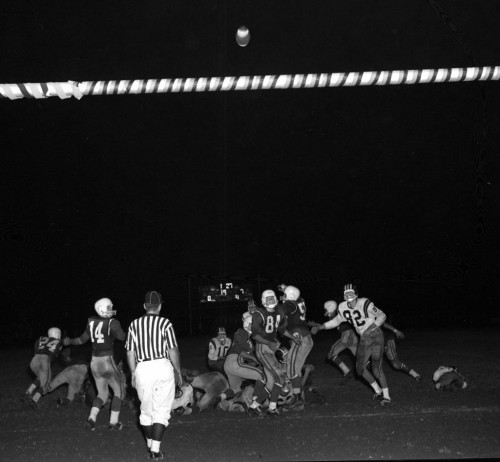 The day of the Big Blowout, we got a radio call from the chopper saying he was 10 minutes out. I clambered up a steel ladder, levered myself through a tiny roof hatch and waited for the film to arrive. THWACKA THWACKA THWACKA, he made the approach. Closer, closer, closer, lower, lower, lower, lower.
The day of the Big Blowout, we got a radio call from the chopper saying he was 10 minutes out. I clambered up a steel ladder, levered myself through a tiny roof hatch and waited for the film to arrive. THWACKA THWACKA THWACKA, he made the approach. Closer, closer, closer, lower, lower, lower, lower.
Just about the time he was going to hand over the film, I was almost knocked off my feet by something that was a cross between a tsunami and an earthquake. The downdraft from the rotor had started the whole roof oscillating. There was no doubt in my mind that if this went on much longer, the effect would be the same as shaking out a bed sheet. My good idea was suddenly looking like it was a bad idea. I didn’t know how much a new roof cost, but if they took it out of my salary, I was assured of having a job for a long, long time.
I gave the pilot a quick wave-off and we made all the rest of the drops when he 30-50 feet above us.
So, don’t count on me being glued to the tube tomorrow. I’ve had all the Big Blowouts that I care to experience.

